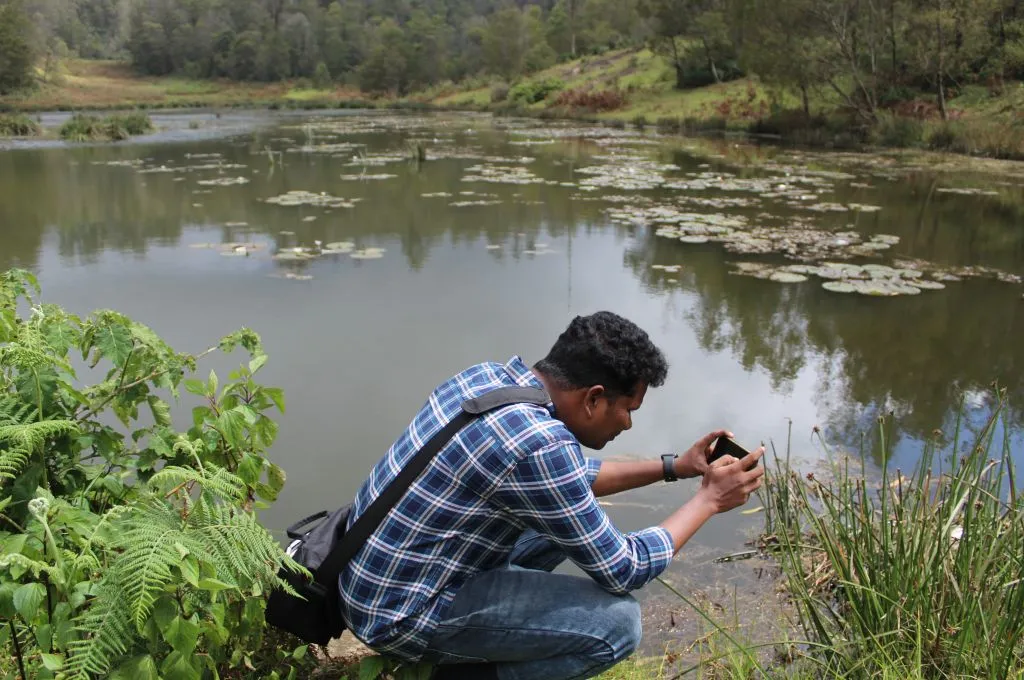In recent years, a number of nonprofit organisations have received large, unrestricted grants from American philanthropist MacKenzie Scott. Her approach marks a clear departure from traditional philanthropy, offering flexible funding that recipients can used in whatever ways they feel would best support their work, with no application or reporting requirements.
To understand the longer-term effects of MacKenzie Scott’s giving, the Center for Effective Philanthropy (CEP) launched a three-year study. The first-year report showed that these grants were beginning to reshape how nonprofits worked.
CEP’s latest report marks the end of the three-year research period and looks at how the funds have been used since 2020. It draws from surveys of more than 800 nonprofit leaders and 243 foundation leaders, financial data, and organisational experiences to understand what has changed, what has worked, and where challenges remain.
The 2025 report explores how nonprofits chose to allocate the money and why, whether the funding helped improve the organisation’s impact, and if changes in fundraising from earlier years had been sustained. The study also looked at early signs of financial progress, any challenges or unintended consequences, and whether MacKenzie Scott’s way of giving had influenced other funders.
What’s changed since year one?
The first round of the study showed early signs of promise: increased confidence among leaders, stronger organisational capacity, and an improved ability to serve marginalised communities. The latest data confirms that these trends were not just initial spikes; in many cases, they have deepened over time. What follows are some of the key takeaways:
1. Financial sustainability has improved
In the first year, many organisations expressed that the grant gave them breathing room—an opportunity to pause and plan. By the third year, this breathing room has paved the way for steady financial decisions that would help them strengthen their future. Approximately 90 percent of nonprofit leaders say the grant has improved their organisation’s financial stability.
The grant has served as a foundation for more sustainable growth.
Organisations are using the funds gradually instead of all at once. Even those who received the grant in 2020 have spent only a little more than half of it as of 2024. Approximately 60 percent plan to use the funds over two to five years, while another one-third expect to stretch it across six or more years. This long-term view has allowed them to build reserves, invest in endowments, or reduce existing debts.
Comparative tax filing data shows that expenses among Scott grant recipients have grown by approximately 50 percent over two years, compared to only about 25 percent among similar nonprofits that did not receive the grant.
Many also used the funds to build up their cash reserves. Two years after receiving the grant, Scott grantees had approximately twice as many months of operating expenses in reserves compared with similar nonprofits. Some leaders noted that they were able to set up a reserve for the first time in their organisation’s history.
Several nonprofits also reported using the funds to grow investment assets, including creating or contributing to endowments. One leader explained that rather than using the money to expand programmes in ways that might be unsustainable, their organisation chose to invest in stability: improving staff compensation, paying off loans, and securing future operational funds.
These choices reflect a focus on long-term health rather than short-term wins. They also suggest that, for many nonprofits, the grant has been more than a temporary boost—it has served as a foundation for more sustainable growth.

2. Programmatic success has not just sustained—it’s growing
By the third year, nearly all organisations had put the funds to use across their programmes, operations, and overall organisational health. Many expanded into new geographies, reached more people, or strengthened existing services. The grant allowed them to respond more quickly to urgent needs and introduce new initiatives that were previously out of reach.
This programmatic expansion mirrors the financial growth described earlier, reflecting how a considerable number of organisations were able to build and scale their services over time.
Leaders pointed out that these kinds of changes would have been difficult under traditional, restricted funding.
Importantly, organisations are also paying attention to outcomes. Additionally, a large part of programme-related work focused on equity. Approximately 85 percent of organisations used the funds to support equity-related efforts, such as improving outreach, hiring more inclusively, or providing stronger support for marginalised communities. Many smaller or community-based organisations also said the grant helped raise their visibility in ways that would have been unlikely through traditional funding.
The expansion in programmatic work is also reflected in the way organisations have strengthened internal systems. Many used the funds to improve delivery models, support community outreach, and build digital tools and infrastructure.
In the earlier years, several nonprofits were still figuring out how to use the money. As per the latest report, most have aligned the funds with their long-term strategy—whether through launching new initiatives or scaling existing ones. The flexibility helped them take risks and respond to changing community needs.
Some organisations introduced new types of services, while others modified older programmes to be more responsive and inclusive. Leaders pointed out that these kinds of changes would have been difficult under traditional, restricted funding.
All of this—combined with the 50 percent rise in expenses among Scott grantees—indicates a steady and meaningful growth in programmatic work. Approximately 70 percent of nonprofit leaders report that they are now tracking the impact of their programmes through surveys, performance data, and other feedback methods—indicating a shift from simply reporting activities to understanding effectiveness.
3. Fundraising has changed, but not for everyone
In the first year, some respondents raised concerns that such large grants might disincentivise other donors. In reality, those fears have not materialised. More than half of the nonprofits say fundraising has become easier. Many now use the Scott grant as evidence of credibility when applying for other funds. Approximately 40 percent are asking for larger or more unrestricted grants, while a few have declined funding that does not align with their values.
Many organisations are now investing more confidently in building long-term fundraising infrastructure.
That said, the report also shows that unrestricted funding from other foundations has not grown at the same pace. Most nonprofits still face the challenge of raising flexible capital, despite MacKenzie Scott’s model showing what’s possible.
Approximately 60 percent of organisations say they have used the grant to demonstrate their credibility to other funders. Some are now more selective in choosing funders, asking for support that aligns better with their goals and values. Around one-third are actively seeking larger and more flexible grants than before.
Fundraising capacity itself has grown, too. Tax filings show that fundraising-related expenses—including staff, systems, and consultants—increased by 40 percent among Scott recipients in the two years after receiving the grant. For comparable nonprofits, this growth was negligible. This rise suggests that many organisations are now investing more confidently in building long-term fundraising infrastructure.
What’s new in year three?
Beyond tracking progress, this year’s report surfaces two critical new themes: the human dimension of leadership, and funders’ continued hesitance towards Scott’s approach.
1. Impact on leadership and organisational culture
Perhaps the most striking finding is how the Scott grants have affected the people behind the work. Approximately 80 percent of nonprofit leaders say the grant boosted their confidence. For leaders of colour—who are often underfunded and over-scrutinised—the impact was even more pronounced. Several leaders report shedding self-doubt, pursuing bolder strategies, and staying longer in their roles because of the trust and stability the grant conferred.
Approximately 40 percent of leaders said that the grant improved internal morale. Some called it ‘rocket fuel’ for staff motivation, while others noted its role in reducing burnout and turnover—especially important in high-stress sectors such as health, education, and justice.
Other leaders said that they stayed in their roles longer than planned because the grant gave them stability and time to focus on their work without added pressure. A few organisations also used the funds to support leadership development through training or mentoring. For many leaders of colour, the grant provided greater freedom to make decisions without constantly having to explain or justify themselves to donors.
2. Funders’ continued hesitance
Despite these successes, only 7 percent of foundation leaders surveyed say that MacKenzie Scott’s approach has significantly influenced their own grantmaking. While many acknowledge the benefits—flexibility, stronger organisations, better morale—they remain hesitant to adopt similar models.
More than 60 percent of foundation leaders still worry about a potential ‘funding cliff’, where organisations won’t be able to cover the ongoing costs of initiatives, when the grant runs out. But only a small fraction of nonprofits report this as a real concern. In fact, most have planned for the future by diversifying income streams, building reserves, and rebudgeting.
This contrast points to a core tension in philanthropy—funders want evidence before trusting nonprofits with autonomy. But as MacKenzie Scott’s approach shows, trust itself can produce the conditions for evidence to emerge.
What this means for the future
Scott’s grants were unusual not only due to their size but also because of how they were given—with trust, flexibility, and no extra conditions. These gifts have since allowed many organisations to grow, plan ahead, and support their teams better.
But this story is not just about one person’s giving. It raises a larger question for the sector: if this approach works, why hasn’t it been adopted more widely?
In India, most nonprofits still work under tight restrictions and short-term funding cycles. This report offers a chance to consider different ways of funding—ways that centre flexible and long-term support.
—
Know more
- Read the report from the Centre for Effective Philanthropy that this article is based on.
- Read about how MacKenzie Scott’s unrestricted grants to nonprofits challenged philanthropic norms.
- Learn how regulatory changes and funding challenges are forcing many Indian nonprofits to scale down or shut operations.





